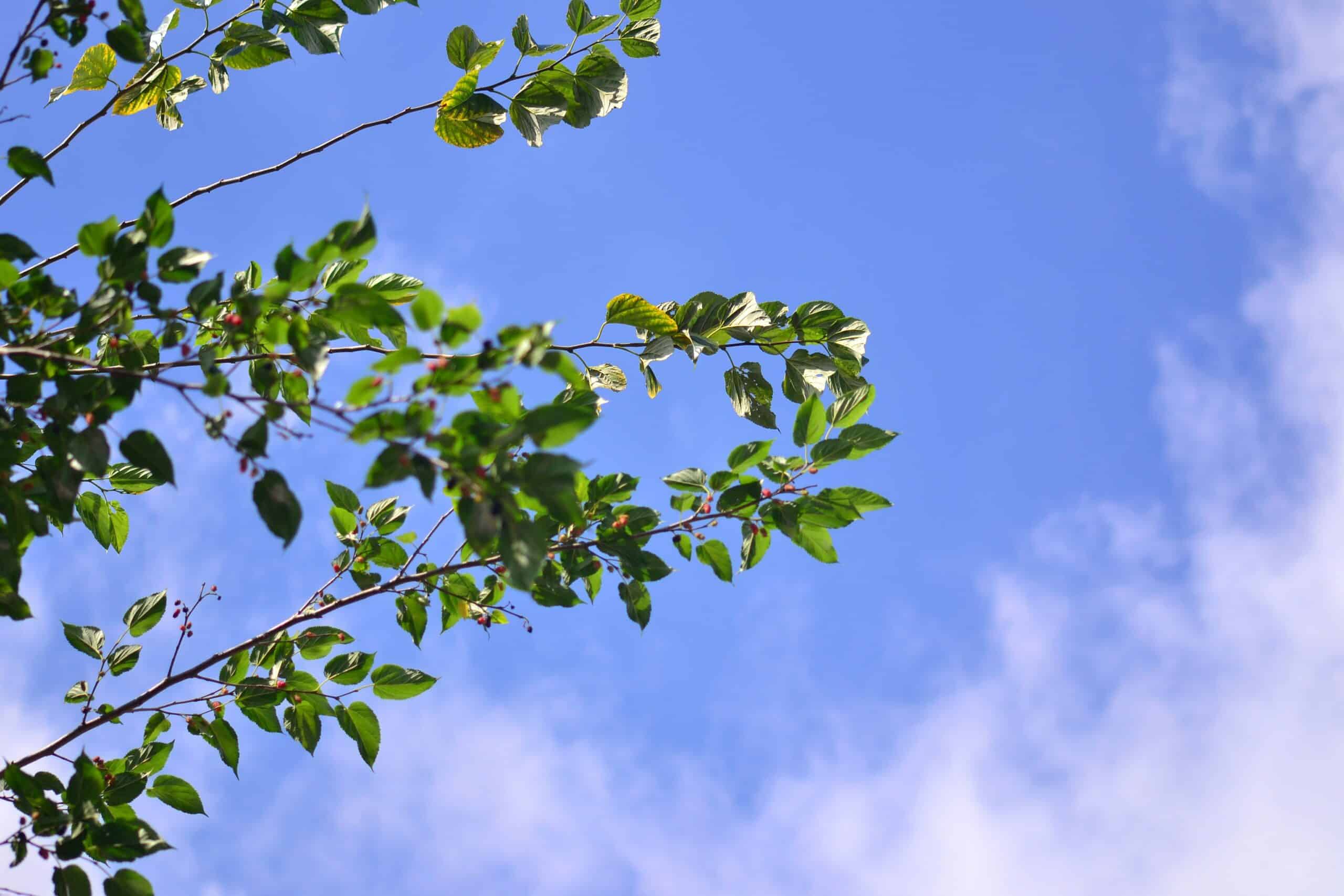The mulberry tree is one of the most rewarding trees to grow in your garden. Not only does it provide delicious fruit and tasty leaves, but its beauty and hardiness make it a great addition to any yard or landscape. Growing and caring for a mulberry tree can be a bit tricky for new gardeners, but with the right information, you can ensure that your tree will thrive. In this article, we’ll discuss how to properly grow and care for your mulberry tree so that you can enjoy its benefits for many years to come.
The beauty of the mulberry tree lies in its lush green foliage and tasty fruits. In the summer months, these trees produce sweet berries that can be eaten fresh from the branch or made into jams, jellies, pies, and other desserts. During autumn, the leaves of the mulberry tree turn deep shades of yellow, red, and orange which make them beautiful additions to any garden or landscape. But before you enjoy all of these benefits of owning a mulberry tree, you must first understand how to best care for them so they will thrive in your garden.
Mulberry trees require plenty of sunlight and soil that is well-drained yet rich with nutrients in order to survive. Depending on what variety you choose to plant in your yard – whether it’s white or black – there are specific conditions each type needs in order to flourish. You also need to pay close attention when pruning your mulberry tree as incorrect techniques can cause damage or even death to the plant. By taking all these factors into consideration when growing a mulberry tree you are ensuring success for years down the road!
Conclusion: With proper care and attention, a mulberry tree can bring a lot of joy to any gardener’s life! In this article we have provided everything you need know about growing and caring for a mulberry tree – from selecting an appropriate location in your garden all the way through pruning techniques – so that your experience with this amazing plant is nothing less than enjoyable!
What Is A Mulberry Tree?
A mulberry tree is like a gentle giant standing tall and proud in your backyard. It’s an impressive sight, with dark glossy leaves that add a certain mystique to the landscape. In addition to its beauty, the mulberry tree has many uses, from providing food for wildlife to producing jam-filled berries for humans.
Mulberry trees are hardy plants that can thrive in most soil conditions. They grow best in full sun and moist, well-drained soil. Mulberries come in two varieties: white and red. White mulberries have a sweet flavor while red ones are tart and acidic. As they mature, the berries turn blackish-purple when ripe, making them perfect for jams and jellies.
Caring for a mulberry tree is relatively easy as long as you provide it with plenty of sunlight, water, and periodic pruning. For best results, feed it with an organic fertilizer every two months during the growing season and be sure to water deeply during dry spells. If you care for your mulberry tree properly, you’ll be rewarded with sweet fruits for years to come! With its attractive foliage and delicious fruits, it’s no wonder why the mulberry tree is such a popular choice among gardeners everywhere.
Where Do Mulberry Trees Grow Best?
Mulberry trees are one of the most versatile fruit trees, with a variety that can grow in a range of climates. In fact, according to the U.S. Department of Agriculture, over two-thirds of the United States is suitable for growing mulberry trees. So where do these unique trees thrive best?
The answer depends on the variety of mulberry tree you choose. Most prefer full sun and well-drained soil, but some varieties are more tolerant of partial shade and moist soils than others. Additionally, many mulberry trees can be found growing in both warm and cool climates, while some varieties are more suited to particular temperatures and rainfall amounts.
When planting your mulberry tree it’s important to consider your local climate so that you get the right variety for your area – this will help ensure it receives all the water and sunlight it needs to thrive. With proper care and attention, your mulberry tree should reward you with an abundance of sweetly tart berries for many years to come! Next up: let’s take a look at the various types of mulberries available to grow in gardens around the world.
Mulberry Tree Varieties
Mulberry Trees are like a rainbow of colors. With varieties ranging from the near-black Queen South to the white fruit of the Weeping White, there is something for everyone. From small and shrub-like trees, to tall and hardy trees up to 50 feet, mulberry trees have been commonplace in landscaping since ancient times.
There are several types of mulberry tree that can be grown in temperate climates, including the white mulberry (Morus alba), red mulberry (Morus rubra) and black mulberry (Morus nigra). Each type has their own unique characteristics – from size and shape to leaf color and taste of fruit. Depending on your preferences and local climate, you may choose any one type or a combination of the three.
The Weeping White variety produces a sweet white fruit that is full of flavor but free of seeds. It is popular amongst gardeners due to its fast growth rate and beautiful foliage which turns yellow in fall. The Queen South produces an almost black fruit with high sugar content which makes it great for jams, jellies and pies. The red mulberry produces a slightly tart red berry that is popular for eating fresh off the tree or adding to sauces and salads.
No matter what variety you choose, growing a mulberry tree will add beauty and flavor to your backyard or garden! Now let’s move onto how to plant these lovely trees so you can enjoy their delicious fruits for many years to come.
How To Plant Mulberry Trees
Like a blank canvas, a mulberry tree is ready to be nurtured and cultivated. Planting one of these trees properly will ensure its growth and health for years to come. Let’s take a look at the key steps involved in successfully planting a mulberry tree.
First, select an area with full sun exposure and well-drained soil. This will give the tree the best chance of thriving. Make sure to dig a hole that is twice as wide and just as deep as the root ball; this will allow for plenty of space for the roots to settle into their new home. When it comes time to place the tree into the hole, make sure that it sits at the same depth it was growing previously.
To help provide additional nutrients, use compost or organic matter when filling in around the newly planted tree. This will help enrich the soil and promote healthy growth. An appropriate layer of mulch should also be applied around your tree; this helps retain moisture and keeps weeds away from taking over your precious plant!
With these steps complete, you can now sit back and watch your mulberry tree begin its journey towards maturity – all while knowing that you have already set it up for success!
Mulberry Tree Pruning And Shaping
Taming the wild mulberry tree is like trying to herd cats – not easy! But with a little bit of pruning and shaping, it’s possible to get them under control. So let’s dive in and learn how to tame the mulberry beast!
When it comes to pruning your mulberry tree, it’s important to remember that you don’t want to take too much away. To start, you should remove any dead or diseased branches, as well as crossing branches that may cause the tree to become overcrowded. After that, you can begin shaping the tree by removing any branches growing in an undesirable direction. This will help keep the shape of your tree looking neat and tidy.
Finally, once you’ve got your mulberry tree into shape, it’s important to make sure that it stays healthy by providing proper care and maintenance. This includes regular watering and fertilization, as well as protecting it from pests and diseases. With a little bit of TLC (tender loving care), your mulberry tree will be looking great in no time at all! Now all that’s left is to find some ideal soil conditions for this beauty – let’s get digging!
Best Soil Conditions For Mulberry Trees
When it comes to the best soil conditions for mulberry trees, there’s a few things you should keep in mind. The first is that the soil must be well-drained and have good aeration. Mulberry trees do not do well in wet, waterlogged soils, as this can lead to root rot. Additionally, mulberries prefer slightly acidic soil pH levels of around 6.0 to 7.0. To make sure your soil has the proper pH level, you can use a store-bought test kit or bring a sample of your soil to a local nursery or garden center for testing.
It’s also important to make sure the area you’re planting your mulberry tree in has plenty of organic matter, such as compost or peat moss, as this will help give your tree the nutrients it needs to thrive. Additionally, if your soil is very compacted or clay-like, then it may need additional amendments such as sand or gravel in order to improve drainage and aeration.
Finally, mulberry trees do best when planted in full sun and away from any buildings or other structures that could provide shade during parts of the day. With these tips in mind, you’ll be able to create an ideal environment for your mulberry tree so that it can grow and thrive for years to come!
Mulberry Tree Fertilizing
Often when it comes to fertilizing trees, people think it is too complicated and time consuming to do. However, mulberry trees are actually easy to fertilize and require minimal effort. In fact, they can help you save money in the long run by providing healthy, delicious fruit that your family will love.
Mulberry trees need a balanced fertilizer that contains all essential macro-nutrients–nitrogen, phosphorus, and potassium–in order to thrive. It’s best to use a fertilizer that has an NPK ratio of 8-4-4 or 10-5-5 for optimal results. Spread the fertilizer around the base of the tree in early spring before new growth starts and again once new growth appears in late spring. Water well after fertilizing so that the nutrients are absorbed into the soil.
In addition to regular fertilizing, it’s important to monitor mulberry trees for any signs of pests or diseases throughout the growing season. Keeping an eye out for these problems can help ensure your tree produces high quality fruit for many years to come. Taking simple preventative measures now can save you from dealing with bigger issues down the line.
Mulberry Tree Pests And Diseases
The 8th step in learning how to grow and care for a mulberry tree is to be aware of the potential pests and diseases that can affect them. In fact, research has shown that over 80 percent of all fruit trees require some kind of pest or disease management. Therefore, it is important to identify any potential problems with your mulberry tree early on.
One common issue with mulberries is the presence of powdery mildew. This fungal pathogen appears as white spots on the leaves, which can grow and spread if not treated quickly. Additionally, aphids are a common pest that targets mulberry trees, especially when they are young and vulnerable. Luckily, there are several treatments available to help control these pests and diseases before they become too serious a problem.
In terms of prevention, it is important to keep the area around your mulberry tree clear of debris, as this can attract pests and encourage the growth of fungi. Additionally, pruning on a regular basis can help keep the tree healthy by removing dead wood and branches which may also harbor disease-causing organisms. From there we move onto watering and humidity – two important factors for keeping your mulberry tree healthy!
Mulberry Tree Watering And Humidity
Watering and humidity are two important factors to consider when growing a mulberry tree. While the tree is young, it needs to be watered regularly and deeply. Mulberry trees generally need approximately one inch of water per week, depending on the climate and soil conditions. Additionally, mulberry trees prefer humid environments and should be kept near a source of moisture. This could include misting or spraying the tree with water several times a week.
It’s also important to monitor the soil moisture levels before watering your mulberry tree. The best way to do this is by using a moisture meter or inserting your finger into the soil up to two inches down; if the soil feels dry, then it’s time to water your tree. Furthermore, you should spread organic material such as compost around the base of the tree during hot summer months in order to help retain moisture in the soil.
Finally, mulberries are more likely to suffer from diseases like leaf spot and powdery mildew when they are growing in wet conditions. Therefore, it’s important that you pay attention to how much water you’re giving your mulberry tree and ensure that it doesn’t become too saturated with moisture. With proper watering and humidity levels, you’ll have a healthy, productive mulberry tree for years to come! Moving forward, we’ll discuss another essential part of caring for a mulberry tree – propagation.
Mulberry Tree Propagation
Propagating mulberry trees can be done through a few different methods. The easiest method is to take cuttings from existing trees and root them in soil or water. Cuttings should be taken from healthy branches with multiple buds, and kept in shade until they have rooted. It’s also possible to propagate mulberry trees using air-layering, which involves wounding the tree’s bark and applying rooting hormone before enclosing the wound with a damp cloth.
Another method of propagating mulberries is by sowing seeds directly into the ground or indoors in a container. Seeds should be planted during the fall or spring seasons when temperatures are milder. If planting outdoors, they should be planted at least two inches deep, while if planting indoors, they should be planted one inch deep in pre-moistened seed-starting mix and kept moist but not saturated until germination takes place.
Once the seedlings are established, they can be transplanted outdoors after hardening-off for a week or two to acclimate them to outdoor conditions. Mulberry trees that have been propagated can take three to four years to begin bearing fruit, so patience is key when growing this type of tree from seeds or cuttings. With proper care and attention throughout their growth cycle, these trees can provide an abundance of sweet fruit for many years to come! Moving forward, it’s important to ensure that these trees are properly pollinated for successful fruiting each season.
Mulberry Tree Pollination
Achieving the sweet, delicious fruits of a mulberry tree requires something that many plants do not: pollination. Allusion to the beauty of bees, the most common pollinators in nature, serves as a reminder of the importance of their role in this process. In order to maximize fruit production from your mulberry tree, understanding the basics of pollination is key.
Pollination is the transfer of pollen from one flower to another and can be achieved by either self-pollinating or cross-pollinating varieties. Mulberries are self-fertile, meaning that each individual flower has both male and female reproductive parts and does not require cross-pollination for fertilization. However, there is still benefit to having multiple trees in order to ensure adequate pollination. This will increase yields and overall fruit size.
There are other ways to increase successful pollination without adding additional trees. Providing additional bee habitat near your mulberry tree can help bring more bees into your garden and ensure they visit your tree more often for its sweet nectar which helps boost fruit production. Additionally, hand-pollinating flowers with a small brush can also be done if you don’t have enough bees visiting your tree or if you live in an area where bees are scarce due to climate change or other environmental factors.
With these tips, you’ll soon be enjoying larger harvests of sweet mulberries each season!
Mulberry Tree Harvesting
Harvesting mulberry trees can be a rewarding experience, but it’s important to know the right way to do it. The best time to harvest these trees is when the fruit appears ripe and juicy. It’s also important to make sure to pick all of the fruit before it spoils, as this will help prevent disease and pests from infesting the tree. To ensure that you get the most out of your harvest, it’s important to use the proper techniques.
When harvesting mulberry trees, start by cutting off any branches that are too low or dead. This will prevent them from getting in the way of your harvesting efforts. Next, you’ll want to remove any unripe or rotten fruit from the tree. Be sure not to pull on any living branches or leaves during this process, as this could harm the health of the tree. Once all of the ripe fruit has been picked, make sure to clean up any debris left behind so that other fruits don’t rot beneath them.
Finally, store your harvested mulberries in a cool and dry place away from direct sunlight or heat sources such as radiators or ovens. This will help keep them fresh for longer and will prevent them from spoiling quickly. With these tips in mind, you’ll be able to enjoy a successful mulberry harvest every year! Moving on, let’s explore how we can use our freshly-picked mulberries.
Mulberry Tree Uses
Mulberry trees are incredibly versatile, with a wide range of uses. In fact, according to the USDA, mulberry trees can yield up to 11 pounds of fruit per tree in some areas. This makes them an excellent option for those looking to get the most out of their garden space.
From culinary delights to medicinal remedies, mulberry trees have a number of practical applications. The sweet fruits of the mulberry tree can be eaten out-of-hand or used as an ingredient in baked goods and other recipes. They also contain antioxidants which can help improve overall health when consumed regularly. Additionally, the leaves from the mulberry tree can be boiled into tea and used as a natural remedy for digestive complaints or sore throats.
The wood from the mulberry tree is also useful for many different tasks. Its strength and durability make it perfect for carving furniture or making tools and weapons. Moreover, its light color makes it ideal for use in constructing musical instruments like drums and stringed instruments such as violins and guitars. With so many uses, it’s no wonder that people around the world value this hardy tree so highly!
Moving forward, let’s explore how to incorporate this valuable tree into our landscaping plans…
Mulberry Tree Landscaping
Mulberry trees are like a breath of fresh air when it comes to landscaping. With their lush, green foliage and delicious-looking fruit, mulberry trees bring a vibrant atmosphere to any garden or yard. Let’s explore how you can use these delightful trees to give your property an uplifting makeover.
When selecting the perfect mulberry tree for your landscape, consider its size and shape. There are several varieties of mulberries that can either be grown as shrubs or full-sized trees. You’ll also want to take into account the type of soil and climate in which you live; some varieties are more tolerant of cold temperatures than others, while some may need more water during dry spells.
The benefits that come with having a mulberry tree in your garden don’t stop there! Mulberries provide food for birds and other wildlife, so you can enjoy watching them flit around your yard. The leaves also make excellent compost material, providing vital nutrients for your plants. For those looking to add color to their gardens, mulberries bloom with beautiful white flowers in springtime that later turn into small berries resembling blueberries.
These delightful trees are sure to add life and beauty wherever they’re planted! With just a bit of care and attention, you can create an inviting outdoor space with a stunning addition: the beloved mulberry tree!
Mulberry Tree Lifespan
When it comes to growing a mulberry tree, one of the most important aspects to consider is its lifespan. On average, these hardy trees can live up to 30 years, but some specimens have been known to outlive even this estimate. In fact, there are records of mulberry trees living for over 100 years! This means that with proper care and maintenance, a mulberry tree can provide your garden with shade and beauty for many generations.
In order to maximize the lifespan of your mulberry tree, it’s important to take care of it properly. Mulberries thrive best in areas with full sun exposure and well-drained soil. Regular pruning is also necessary in order to keep the size under control as well as promote new growth. Lastly, keeping up with regular fertilization will help ensure that your tree remains healthy for years to come.
With proper attention and care, you’ll be able to enjoy a beautiful mulberry tree in your garden for many years. Not only will it bring life and greenery into your landscape but it could also become an heirloom passed down through generations. So don’t forget the importance of taking care of your mulberry tree in order to get the most out of its long lifespan!
Frequently Asked Questions
How Long Does It Take For A Mulberry Tree To Mature?
Mulberry trees are a great addition to many gardens, and they’re not too hard to care for. But how long does it take for one of these trees to mature? That’s something every gardener needs to know before they buy a mulberry tree!
The good news is that mulberry trees grow quickly, so you won’t have to wait years for your tree to bear fruit. In fact, some varieties can reach full maturity in as little as two years! Of course, the speed at which your mulberry tree will mature depends on the variety you choose. Some take much longer than two years, so be sure to do your research before planting.
Once planted and cared for properly, a mulberry tree can live for decades – with proper maintenance like pruning and fertilizing, you could enjoy its bounty for many years. To ensure your tree produces plenty of delicious fruit each year, make sure it has enough water and sunlight. With just a little bit of effort and attention, you’ll soon be able to reap the rewards of this wonderful plant!
What Type Of Climate Is Best For Growing Mulberry Trees?
Are you looking for a way to bring your garden alive? Then look no further than growing mulberry trees! Not only are these trees visually stunning, but their dark and sweet fruits are a delicious treat. But before you start planting, you must understand the climate requirements for the perfect growth of your mulberry tree.
Mulberry trees thrive in warm climates with plenty of sunshine and mild winter months. They need well-draining soil that is rich in organic matter and slightly acidic. The trees do not tolerate frost or excessive dryness, so they need to be planted in areas that offer protection from cold weather and consistent moisture. You should also consider planting them in an area where there is some shade during the hottest part of the day.
When it comes to caring for a mulberry tree, regular pruning is essential. Pruning helps keep the tree healthy by removing any dead or diseased branches, as well as thinning out overcrowded areas. Mulberry trees should also be fertilized twice a year to ensure they have all the nutrients they need to grow strong and produce abundant fruits. With proper care, you can have a lush and fruitful mulberry tree in no time!
Can Mulberry Trees Be Grown In Containers?
Perfectly potted, mulberry trees can be cultivated with care. Container gardening offers an easy way to grow these attractive plants in almost any location. But before you decide to grow a mulberry tree in a pot, it is important to understand the unique demands of this type of cultivation.
To begin with, it’s essential to select an appropriate container for your tree. A large size is preferable since mulberries have extensive root systems and need plenty of space for growth. Make sure the pot has good drainage holes, so that water does not accumulate and cause root rot.
For best results, use a soil mixture that is rich in organic matter and loamy texture. Mulberries also require regular watering but should not be overwatered as this can cause problems like fungal infections or nutrient deficiencies. Additionally, while they do well in full sun, they can also tolerate light shade and require adequate fertilizer throughout the season to promote healthy foliage growth and abundant fruit production.
It is possible to successfully cultivate mulberry trees in containers as long as you are mindful of their specific needs. By selecting the right container, soil type and nutrition requirements, you can enjoy watching your tree thrive year after year!
Is There A Special Fertilizer To Use For Mulberry Trees?
Getting the right fertilizer for your mulberry tree is critical if you want it to thrive. Just like any other plant, mulberries need specific nutrients and minerals to stay healthy and grow big and strong. It’s a lot like having the right ingredients in a recipe; without them, you won’t get the desired result.
The good news is that special fertilizers for mulberry trees are widely available, so you don’t have to worry about not being able to find one. There are even organic options if you’re looking for more natural alternatives. However, what type of fertilizer you use will depend on the age and size of your tree as well as its location. That’s why it’s important to consult an expert or do some research before making your purchase.
It’s also a good idea to keep an eye on your mulberry tree throughout the growing season to make sure it gets all the nutrients it needs. If there are any signs of deficiency, a quick application of fertilizer can help put things back on track. After all, taking preventive measures is always better than trying to fix something after it’s gone wrong—an ounce of prevention is worth a pound of cure!
Are Mulberry Trees Self-Pollinating?
Are mulberry trees self-pollinating? It’s a great question to ask when considering how to best care for your mulberry tree. After all, the pollination process is a key factor in the success of any fruit-bearing tree. So, what is the answer?
Self-pollination happens when a flower’s male and female parts are able to fertilize each other without help from outside sources such as insects or wind. In general, mulberry trees are not self-fertile—they rely on outside sources of pollen to ensure successful reproduction. The good news is that many varieties of mulberry can be cross-pollinated with different types in the same species, which helps increase their production potential.
It’s important to note that pollination isn’t just necessary for fruit production—it’s also essential for healthy leaf growth and overall tree health. Luckily, mulberries have a wide range of natural pollinators, including bees and other beneficial insects. To make sure your tree has enough pollinators around it, consider planting companion plants such as herbs and flowers nearby. This will create a hospitable environment for them and maximize your mulberry tree’s ability to thrive!
Conclusion
Mulberry trees are an ideal choice for anyone looking to add a bit of whimsy and wonder to their garden. With a little knowledge and the right care, you can have a mature Mulberry tree in no time! All that’s needed is some patience and the right climate conditions. So before you know it, you’ll have your own beautiful Mulberry tree growing in your yard.
And when it comes to caring for your Mulberry tree, there are a few easy steps to follow. You’ll need to use special fertilizer, water regularly, and make sure the soil is well-draining. Additionally, if you want your Mulberry tree to produce fruit, be sure to find out if it’s self-pollinating or not—some varieties require cross-pollination from another variety.
As we can see, growing and caring for a Mulberry tree is really quite simple—all it takes is some patience and proper maintenance. So if you’re looking for something interesting and unique for your garden, why not try out a Mulberry tree? It may just turn out to be one of the most rewarding experiences of your gardening career!





























